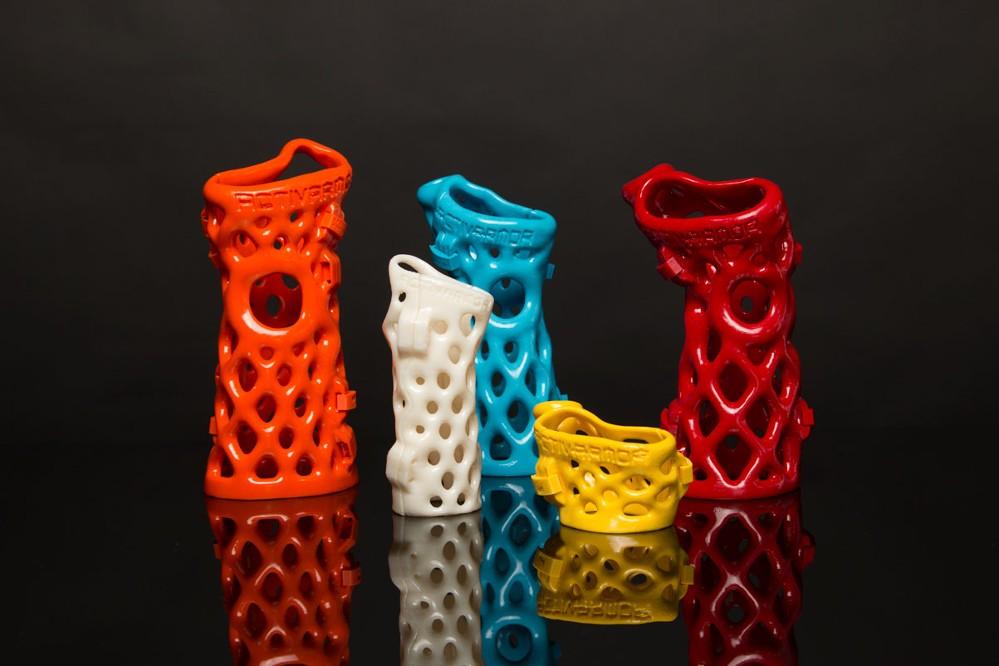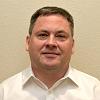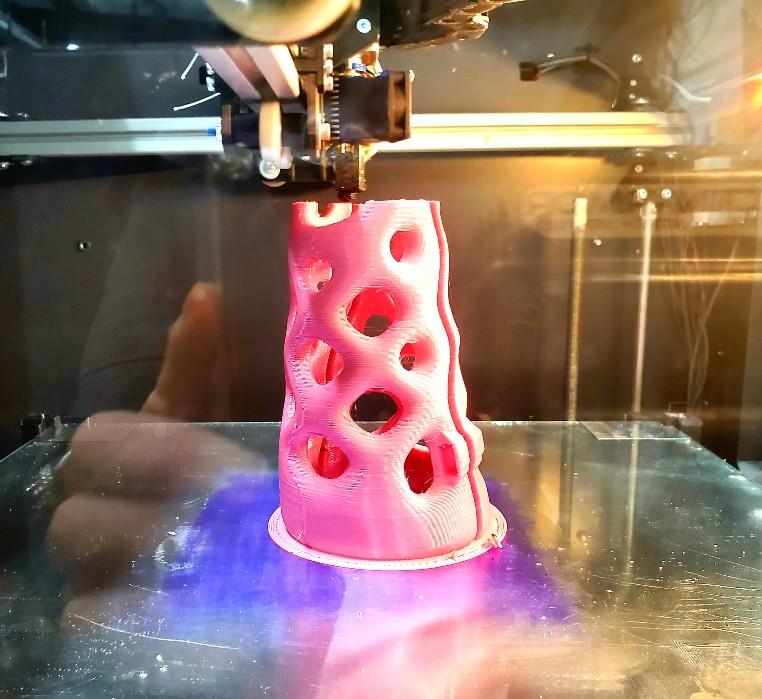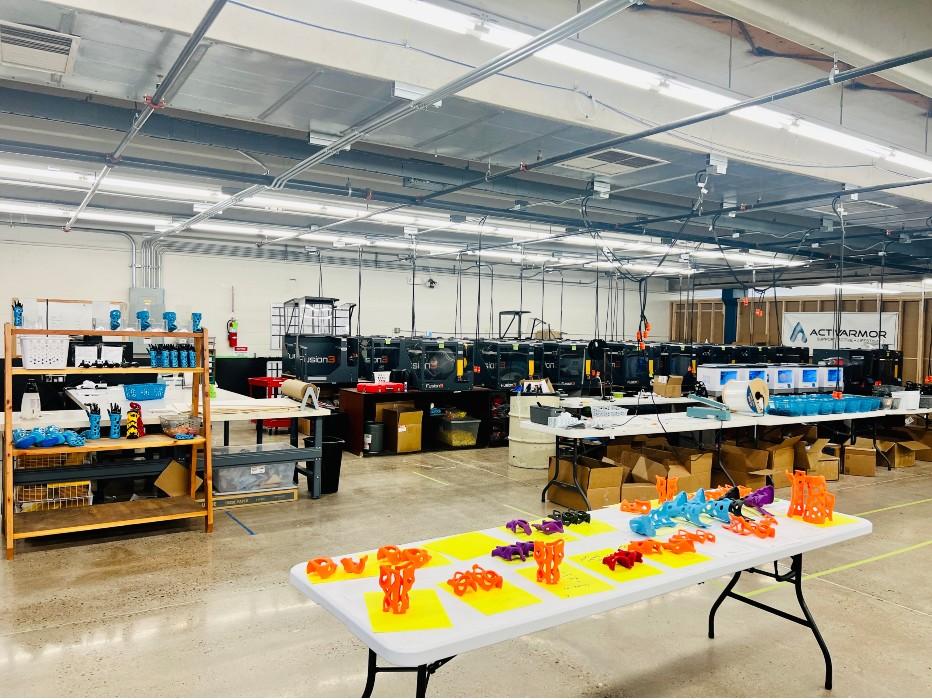- FMA
- The Fabricator
- FABTECH
- Canadian Metalworking
Our Publications
Categories
- Additive Manufacturing
- Aluminum Welding
- Arc Welding
- Assembly and Joining
- Automation and Robotics
- Bending and Forming
- Consumables
- Cutting and Weld Prep
- Electric Vehicles
- En Español
- Finishing
- Hydroforming
- Laser Cutting
- Laser Welding
- Machining
- Manufacturing Software
- Materials Handling
- Metals/Materials
- Oxyfuel Cutting
- Plasma Cutting
- Power Tools
- Punching and Other Holemaking
- Roll Forming
- Safety
- Sawing
- Shearing
- Shop Management
- Testing and Measuring
- Tube and Pipe Fabrication
- Tube and Pipe Production
- Waterjet Cutting
Industry Directory
Webcasts
Podcasts
FAB 40
Advertise
Subscribe
Account Login
Search
3D-printing the casts used to set broken bones improves patient outcomes
Additively manufactured casts offer numerous advantages over ‘smelly, itchy’ plaster ones
- By Kip Hanson
- August 30, 2022
- Article
- Additive Manufacturing

ActivArmor’s 3D printing process allows production of a wide range of custom-fit casts and splints for people of all shapes, sizes, and ages. Images: ActivArmor
Fans of the NFL’s Jacksonville Jaguars football team will be happy to learn that there’s a new and improved way to treat the broken bones and sprains players occasionally suffer. Northern Florida high school and college athletes who hurt themselves while playing sports will be similarly pleased, as will anyone else with a broken bone who visits Dr. Kevin Kaplan, an orthopedic surgeon with the Jacksonville (Fla.) Orthopaedic Institute and the Jaguar’s head team physician.
“I was looking for a better treatment option for my athletic patients,” he said. “Traditional plaster casts present all manner of problems in terms of sweat, dirt, and itching. And when you’re trying to get a fracture or broken bone to heal, taking a cast off to assess the healing process—while often necessary—isn’t the best thing.
“That’s when I met Diana.”
Kaplan’s talking about Diana Hall, the founder and CEO of Pueblo, Colo.-based ActivArmor and a 2022 recipient of Colorado’s Manufacturing Woman of the Year award.
Building Solutions
In 2014, Hall began offering the better treatment option Kaplan referred to. A chemical engineering graduate of the Colorado School of Mines, Hall was running a mentoring program for children in poverty when she—like Kaplan—began looking for an alternative to plaster casts. Having had previous experience with 3D printing at various Fortune 500 companies, it didn’t take her long to come up with a solution.
Said Hall: “Kids like to play. They get their casts dirty, they get them wet, and because of this, we need a hygienic, washable alternative for immobilizing broken bones. I quickly realized that if we could additively manufacture a cast from biocompatible plastic, it would provide a sanitizable and custom-fitted orthotic device that would lead to a much better outcome.”
ActivArmor has since 3D-printed tens of thousands of such casts throughout the U.S. and established an ever-increasing number of corporate partnerships in Canada, Australia, Greece, the Middle East, and elsewhere. Hall also has collaborated with additive manufacturing technology firms such as Denmark’s Create it REAL, which makes the slicing software used by ActivArmor, and Twikit, a design-automation software developer based in Belgium.
She’s also a devoted user of FFF (fused filament fabrication) printers. Several dozen FFF-style machines of varying sizes from Fusion3, Greensboro, N.C., are on ActivArmor’s Pueblo production floor. Most of them have been fitted with special hot-end nozzles and other features to maximize print speed.
Printing Process
Hall and the ActivArmor team have developed an end-to-end workflow that assures compliance with FDA regulations. Its casts and splints are made of ABS and have been thoroughly tested for any microporosity that could lead to fluid absorption and bacterial growth, as well as biocompatibility and mechanical strength. The result is an efficient, repeatable process that allows ActivArmor to deliver custom-fitted orthoses to its medical partners within four days. (Rush orders ship in a shorter time period.)
When a patient in need of a cast arrives at a medical facility participating in the ActivArmor program, the attending physician scans the injured limb with a cell phone equipped with the ActivArmor Scan app. Next, the physician takes a few measurements of the injured limb and answers a series of questions the app poses, then transmits the results to ActivArmor for processing.
While waiting for the cast to arrive, patients are fitted with a temporary splint—also 3D-printed by ActivArmor—that gives the edema (swelling) common with broken limbs some time to dissipate. It’s also an easy-to-use process, so much so that ActivArmor will soon begin leasing preconfigured 3D printing cells to participating clinics for use in their facilities, further expediting patient care.
Click here to read more about the program.Rethinking Casts
One clinic looking forward to the printing cell roll-out is Motion Is Medicine, a North Richland Hills, Texas, primary-care sports and family medicine founded by Dr. Daniel Clearfield.
“Anybody who’s worn a plaster cast knows the experience. They’re itchy, smelly, and uncomfortable,” said Clearfield, who’s also the team physician for USA Wrestling and USA Judo. “With 3D-printed casts, my patients can do all the activities they’re accustomed to.” He laughed. “I’ve started referring to ActivArmor casts as ‘summer savers.’ ”
Dr. Laurence “Laudi” Laudicina of ABQ Orthopedics in Albuquerque, N.M., agrees. He said patients know “there’s something special going on” when he begins scanning their wrist or ankle with his smartphone. “And when I pull that colorful 3D-printed cast out of the box, the response is always, ‘That’s so cool.’ What’s even more cool is that they can hop in the shower, play sports, and jump in the pool with their friends.”
Hall is clearly pleased to have hit a 3D-printed home run, but she is even happier that people of all ages now have an affordable alternative to the “smelly, itchy” orthoses of yesteryear. She said the cost of an ActivArmor cast is about the same as the two plaster casts it replaces. (A plaster cast must be cut off and replaced for every exam and X-ray.)
And because an ActivArmor cast eliminates annoyances common with a plaster cast—like snaking a coat hanger inside to scratch an itch—patient compliance is better. That greatly improves outcomes, said Hall.
She expects that plaster casts eventually will go the way of the iron lung.
“Plaster casts make it difficult for anyone to even practice basic hygiene like washing their hands—especially kids,” said Hall. “You have people in the food service and medical industries who end up on short-term disability because they can’t sanitize their hands, so workers’ comp providers love ActivArmor.
“Additive manufacturing has changed all that. It’s become a tool to improve people’s quality of life, and now it’s available to all fracture-care providers worldwide,” said Hall.
About the Author

Kip Hanson
About the Publication
- Podcasting
- Podcast:
- The Fabricator Podcast
- Published:
- 04/16/2024
- Running Time:
- 63:29
In this episode of The Fabricator Podcast, Caleb Chamberlain, co-founder and CEO of OSH Cut, discusses his company’s...
- Trending Articles
- Industry Events
16th Annual Safety Conference
- April 30 - May 1, 2024
- Elgin,
Pipe and Tube Conference
- May 21 - 22, 2024
- Omaha, NE
World-Class Roll Forming Workshop
- June 5 - 6, 2024
- Louisville, KY
Advanced Laser Application Workshop
- June 25 - 27, 2024
- Novi, MI




























